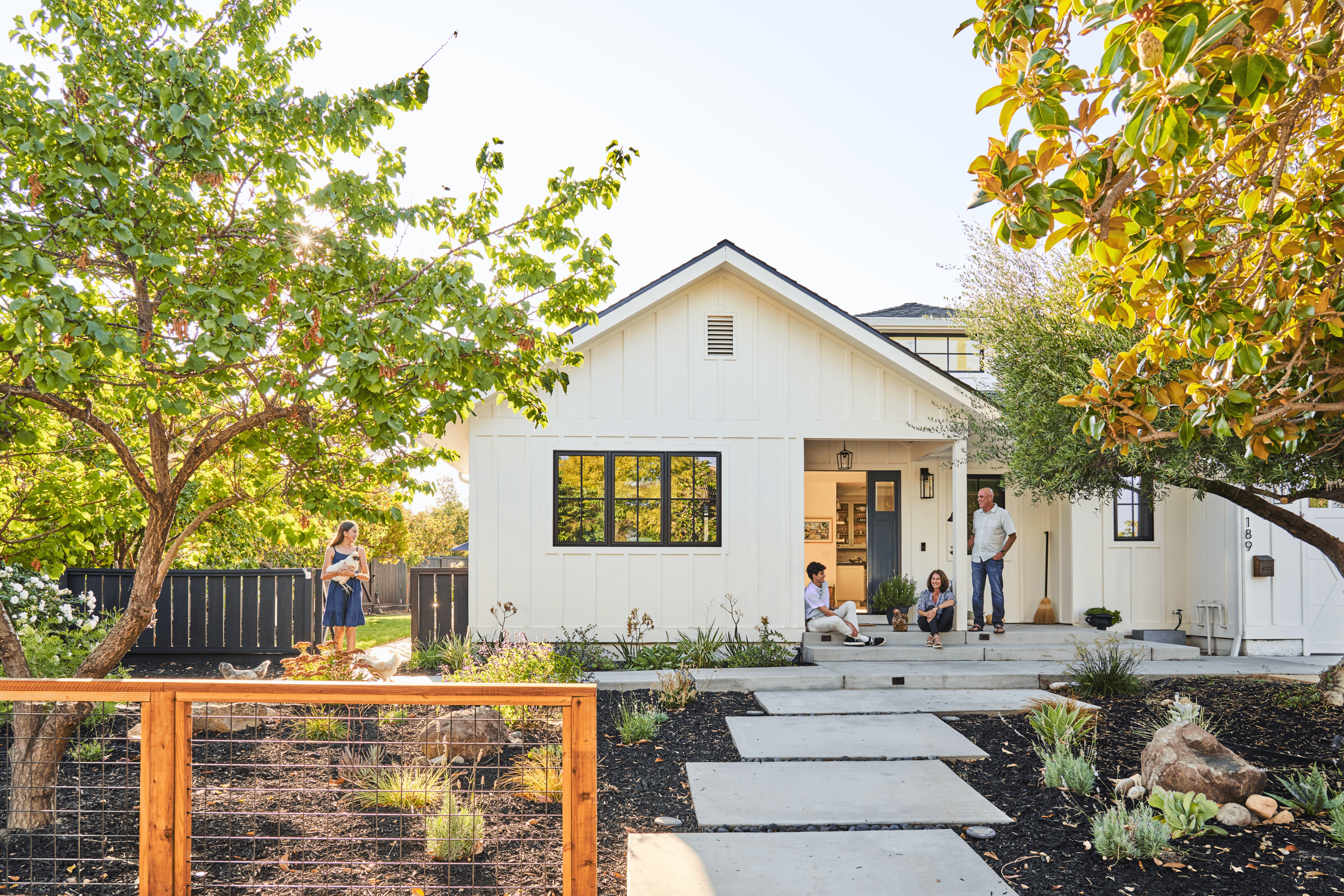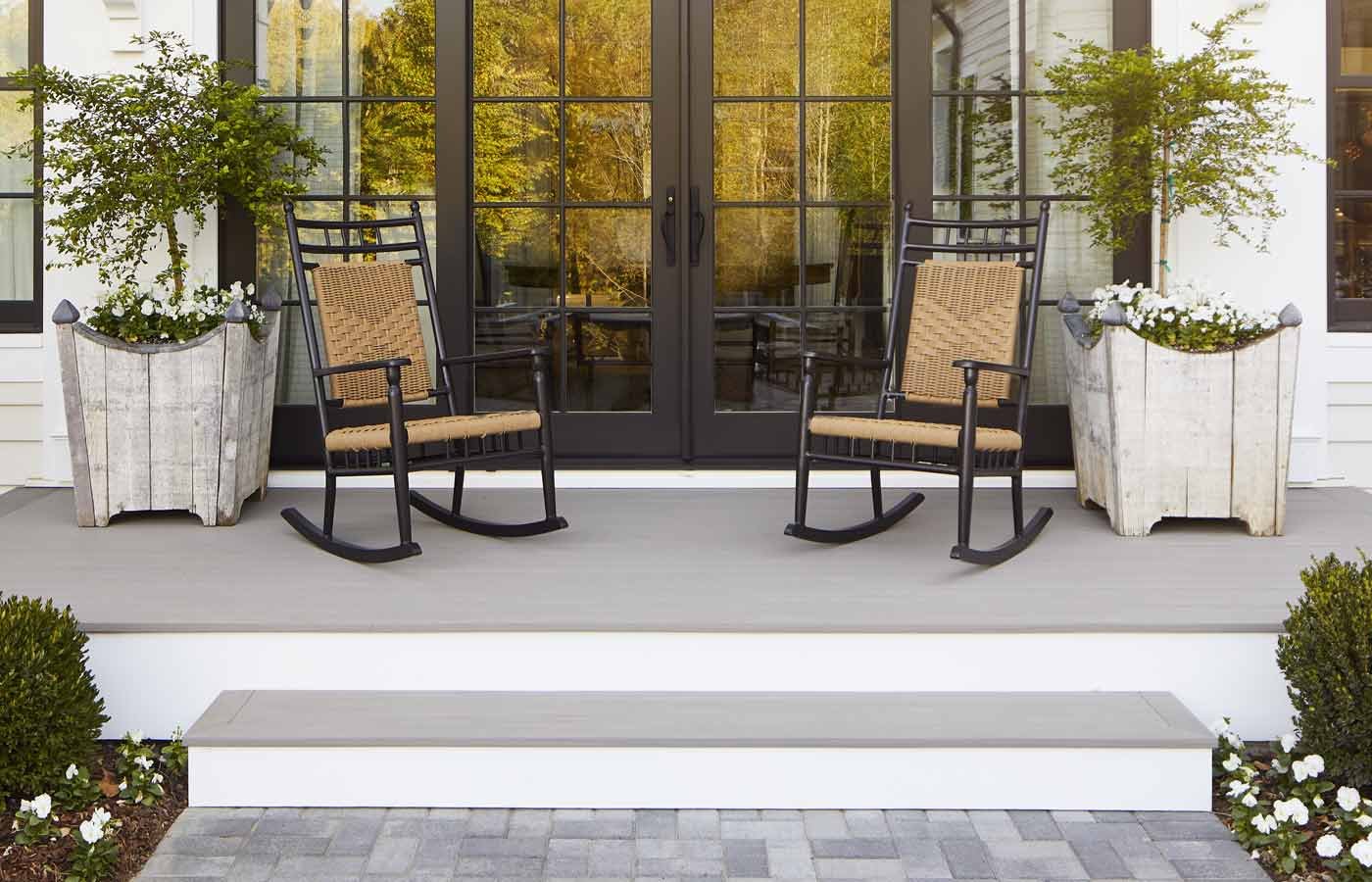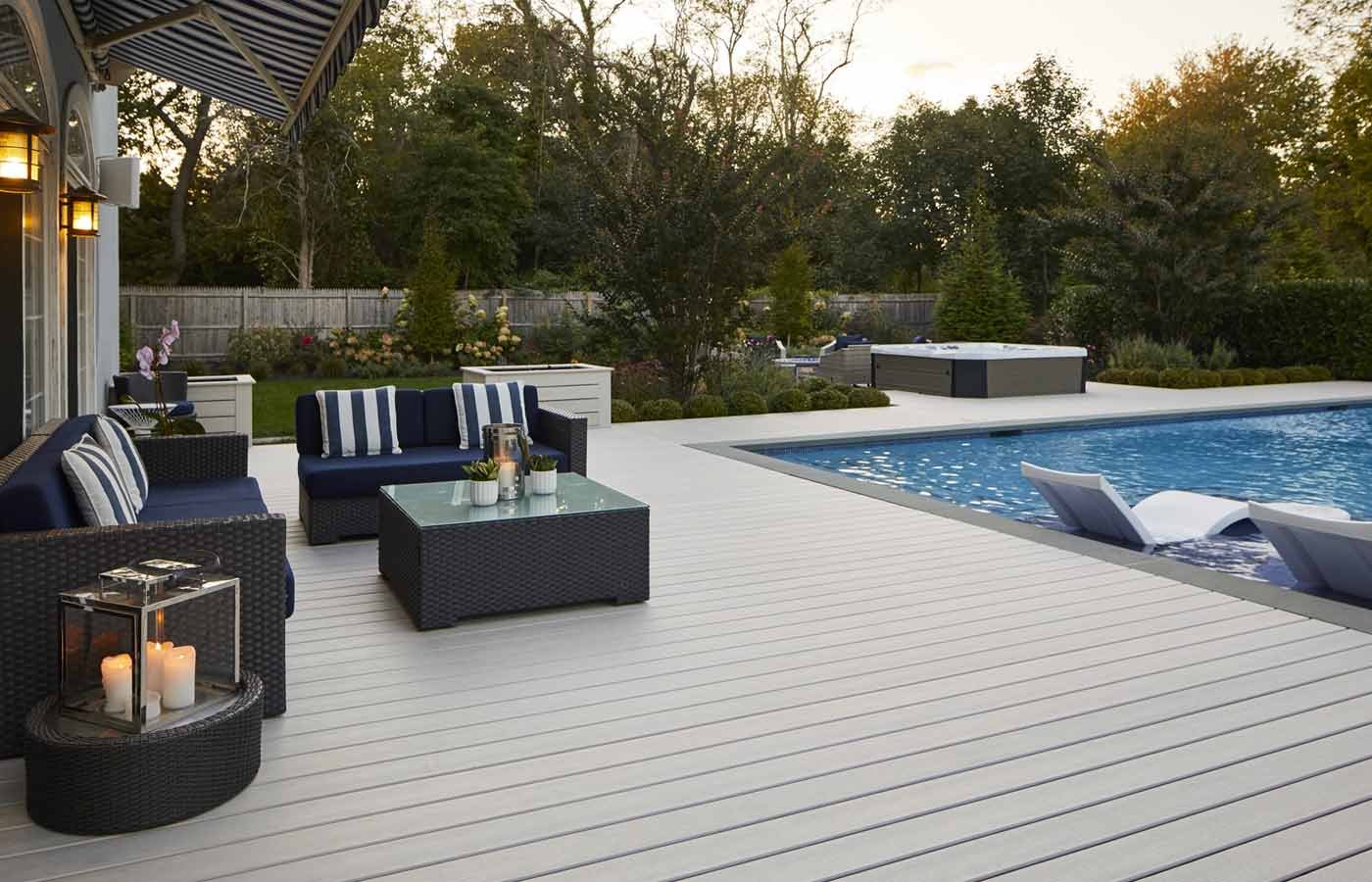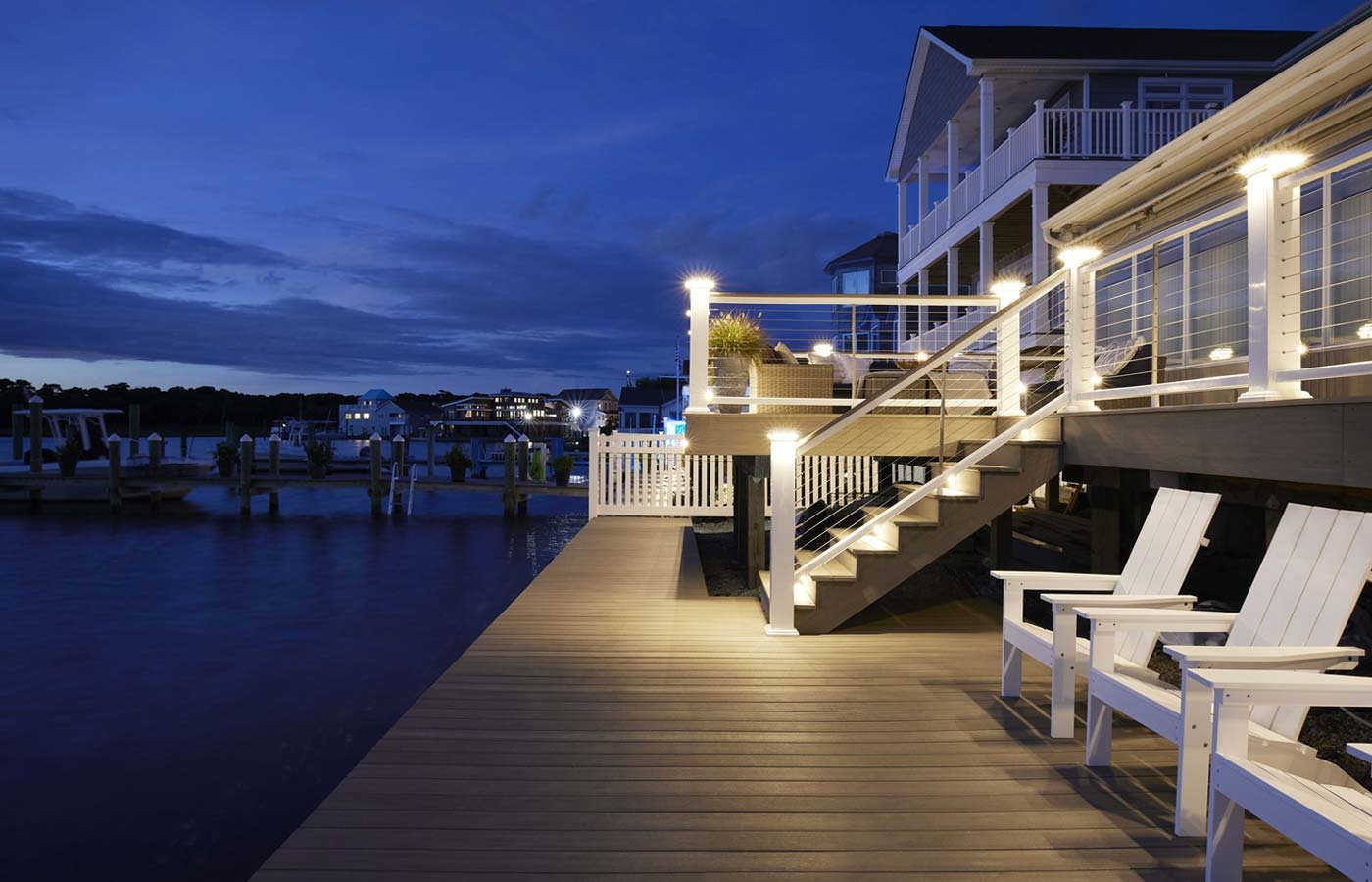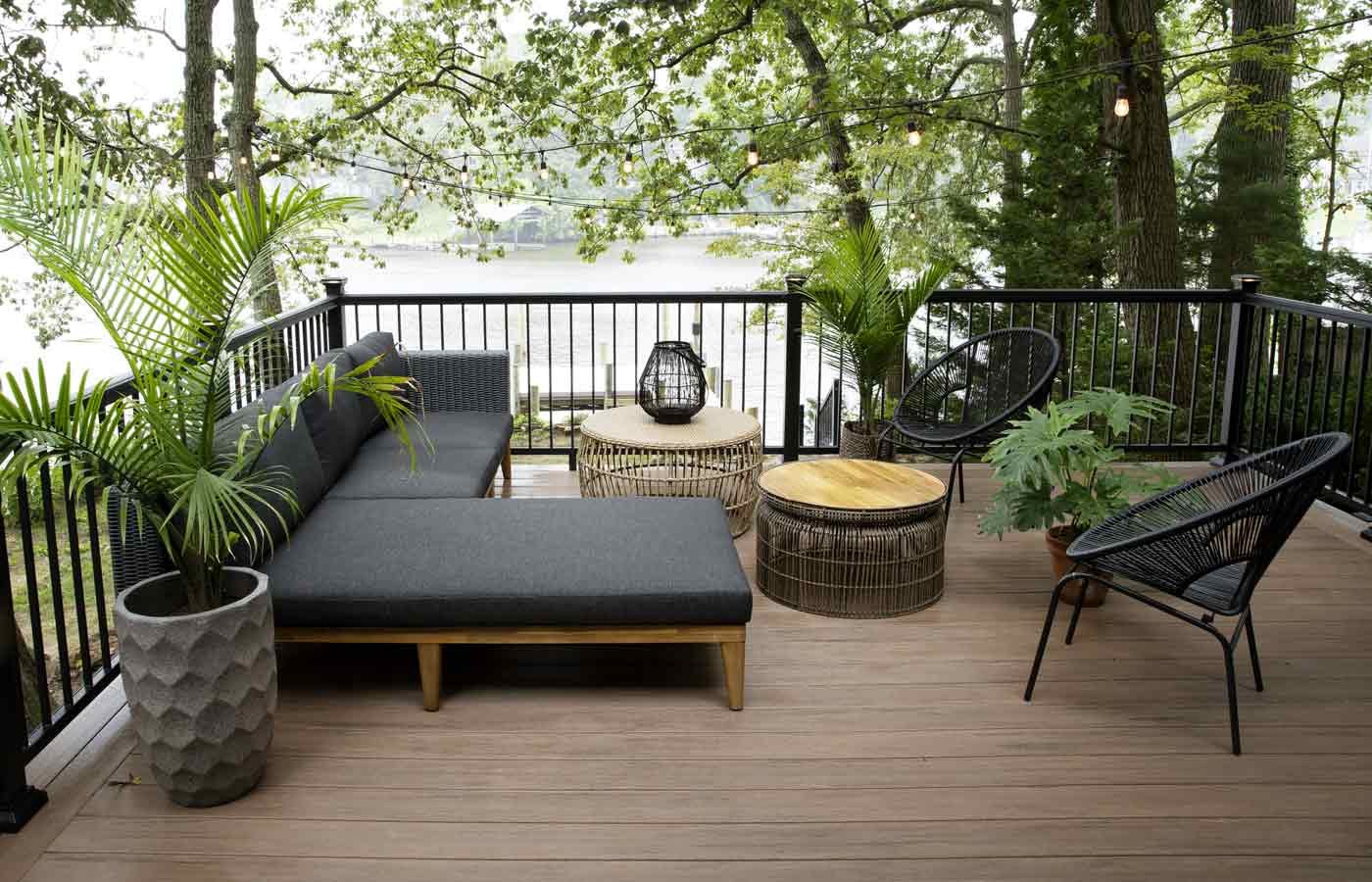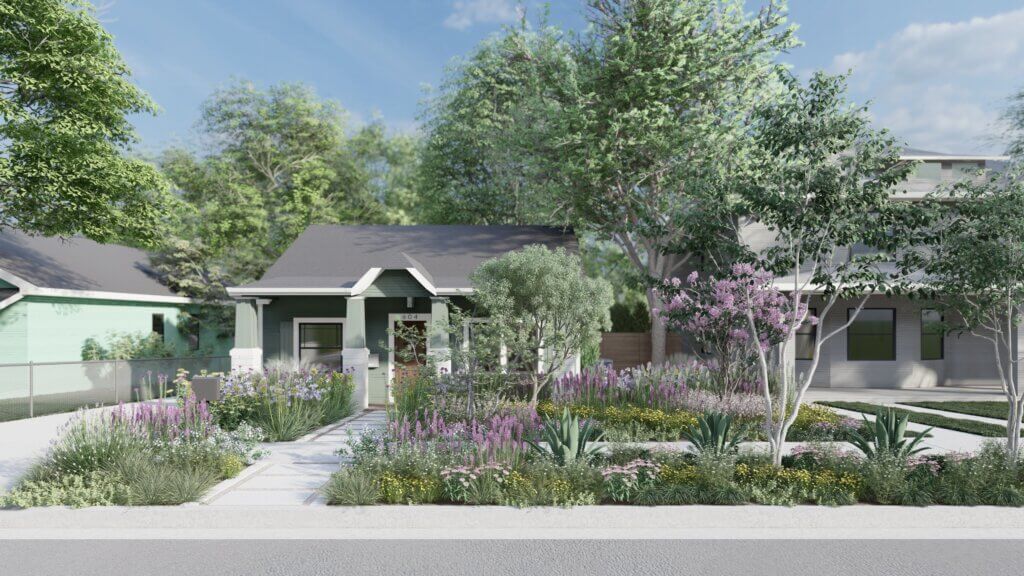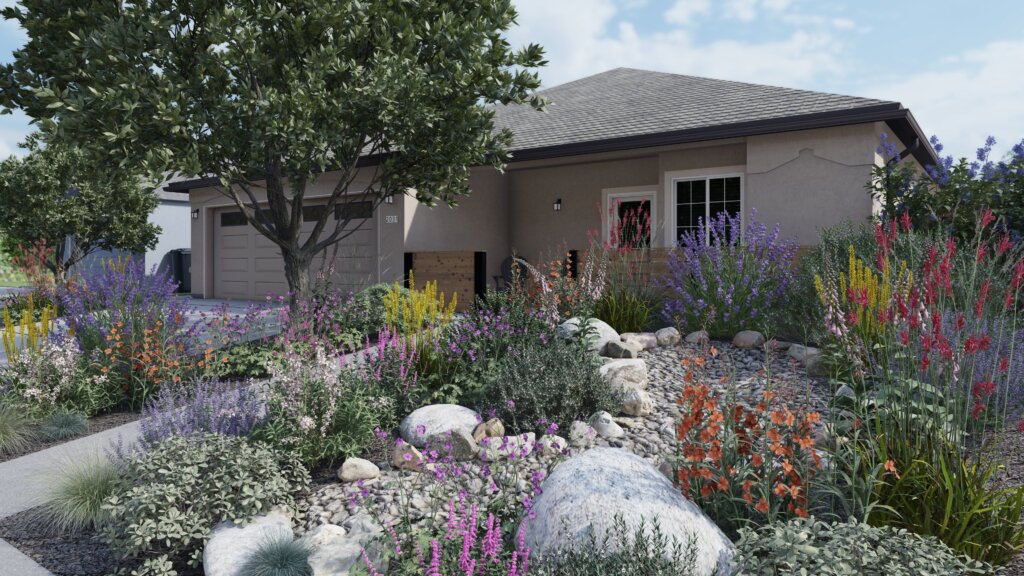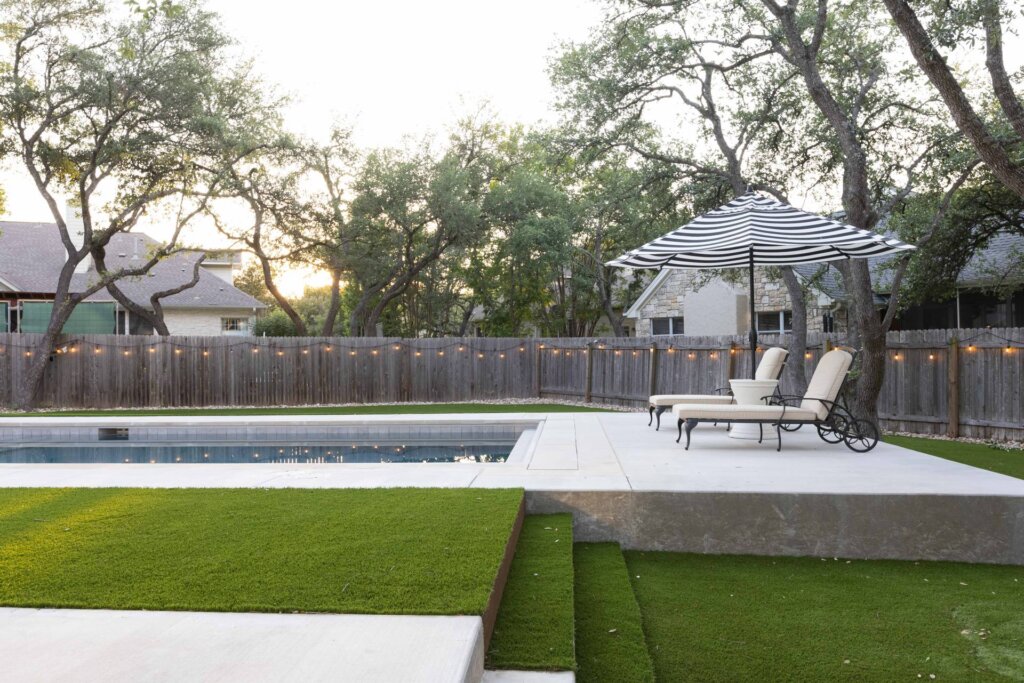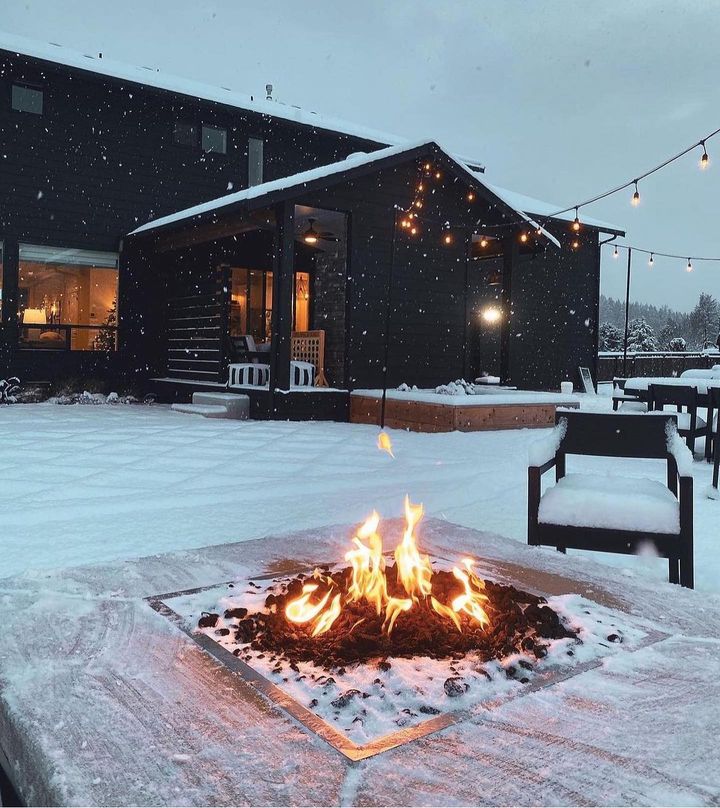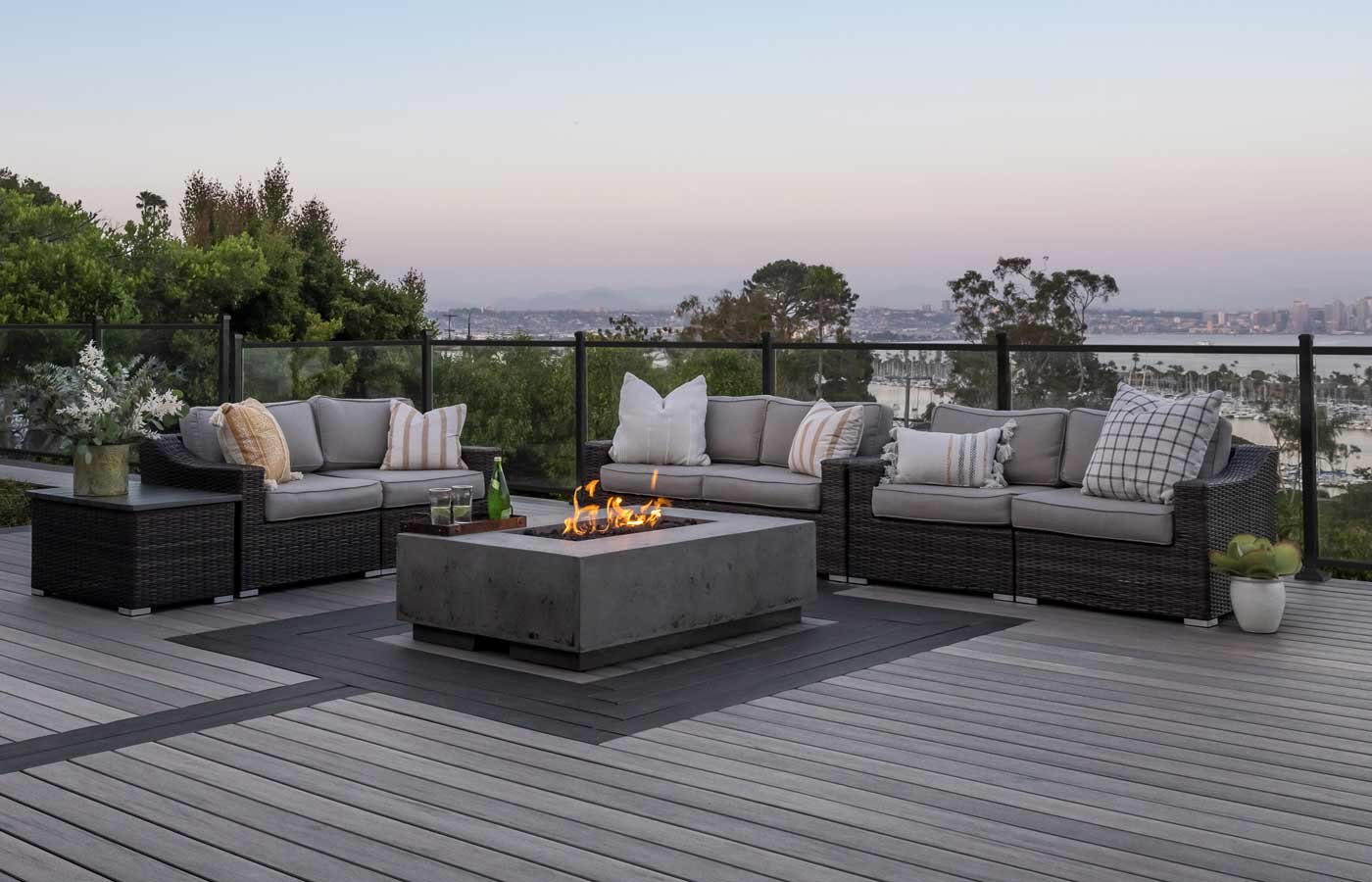
We’ve already sung the praises of TimberTech composite decking, and those praises bear repeating:
TimberTech is exceptionally attractive. Thanks to proprietary color-cascading technology, TimberTech boards boast natural color blending and super realistic wood grain patterns.
TimberTech dramatically outperforms wood, resisting weathering, bowing, fading, UV or moisture damage, stains, and scratches. Year after year, it stands up to pretty much anything you can throw at it.
TimberTech is virtually maintenance free. With natural wood decking, you must apply annual waterproofing treatments, and repair or replace boards damaged by rot or exposure. TImberTech skips all of this – give it a cleaning now and then, otherwise your work is done.
TimberTech has a better lifetime value than natural wood. WIth minimal maintenance needs and average lifespans ranging from 25-50 years, TimberTech decking avoids the frequent maintenance, repair, and replacement costs of wood. It will save you time, hassle, and money.
All this is to say: case closed, TimberTech is superior to wood decking.
And yet, despite these impressive factors, TimberTech’s sustainability may be its most exciting feature.
DURABLE DESIGN AND CONSTRUCTION
Technical innovation and a steadfast commitment to sustainability underpin every step of TimberTech’s manufacturing process.
Every TimberTech board features a cap and a core. That incredible longevity we mentioned? That’s largely thanks to the cap, which utilizes innovative materials and technology to provide both exceptional looks and unparalleled protection from mildew, rot, and other factors that could damage the core. TimberTech’s AZEK and PRO decking features caps that are 100% polymer, free from any wood particles that could degrade and allow moisture to sneak in.
TimberTech’s manufacturing facilities also use advanced quality control practices like laser dimensional controls and real-time monitoring to ensure that every single board meets their rigorous standards for integrity.
This emphasis on longevity translates to big sustainability gains – the longer decking lasts, the less often it ends up in landfills.
RECYCLED CONTENT
TimberTech pushes recycling to new levels. They deliberately source hard-to-recycle materials like dark plastics, which traditionally end up in landfills. They built their own state-of-the-art recycling facility to recycle additional plastic types like PVC. They even reclaim scrap decking, not only from their own facilities, but from independent fabricators and contractors – every scrap from the job site that doesn’t get used can get funneled back to TimberTech to be recycled.
Remember the cap and core? TimberTech decking can be composite, with cores made from wood and plastic, or polymer, with cores made entirely of plastic.
TimberTech’s composite cores use up to 100% recycled wood and plastic. Factor in the polymer cap, and the entire composite board comprises up to 80% recycled content.
TimberTech’s polymer boards are no slouch either, using over 50% recycled plastic in their cores, with the majority of that recycled content being hard-to-recycle plastics.
WASTE DIVERSION AND CONSERVATION
All that recycling means a LOT of waste being kept out of landfills.
In 2021, TimberTech’s recycling program diverted about 500 million pounds of waste and scrap from landfills, up from 400 million pounds in 2020. By the end of 2026, they aim to use 1 billion pounds of recycled material annually. They’re not just recycling, they’re recycling more expansively every year.
TimberTech also reclaims 99% of internal scrap generated across their manufacturing facilities, and recycles up to 97% of the water used at their largest facilities. They’re downright allergic to waste.
SAVING TREES…AND BIODIVERSITY, AND THE ATMOSPHERE
Of course, using TImberTech also saves trees – over 3 million of them since 2001, to be exact.
Saving trees is about much more than the trees themselves. Old growth and native forests store carbon for centuries, and provide rich habitat that has become absolutely essential as biodiversity plummets worldwide.
Typical timber plantations – the source of most wood decking – feature a single tree species and minimal ecological value. Native and old-growth forests are routinely removed and replaced by timber plantations, both legally and illegally operated. This process disturbs soil, pollutes waterways, and destroys critical habitat. The cumulative effect is devastating to biodiversity, and results in massive amounts of greenhouse gasses entering the atmosphere.
By opting for TimberTech, you opt out of unsustainable timber production systems, and throw your support behind a smarter, more sustainable approach to building outdoor spaces.
Want to learn more about TimberTech? Visit their website, or contact your Yardzen team.
Featured Articles
How an Interior Designer Created “Outdoor Rooms” in Her Yardzen Yard
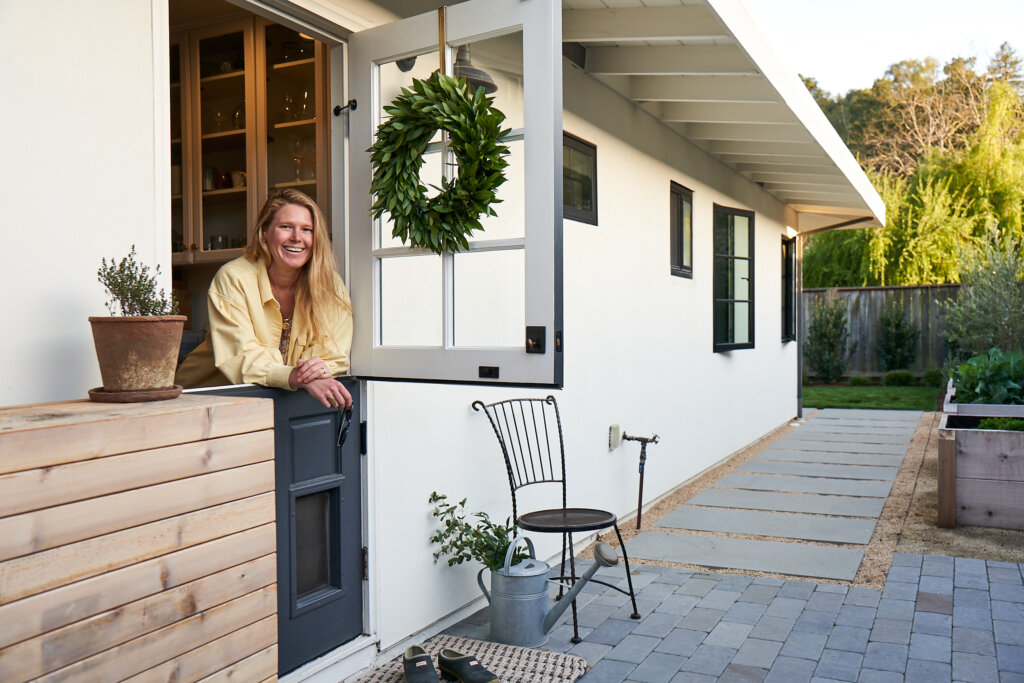
The Best Outdoor Cold Plunge Tubs & Ice Baths in 2024 (Chosen by Our Client...
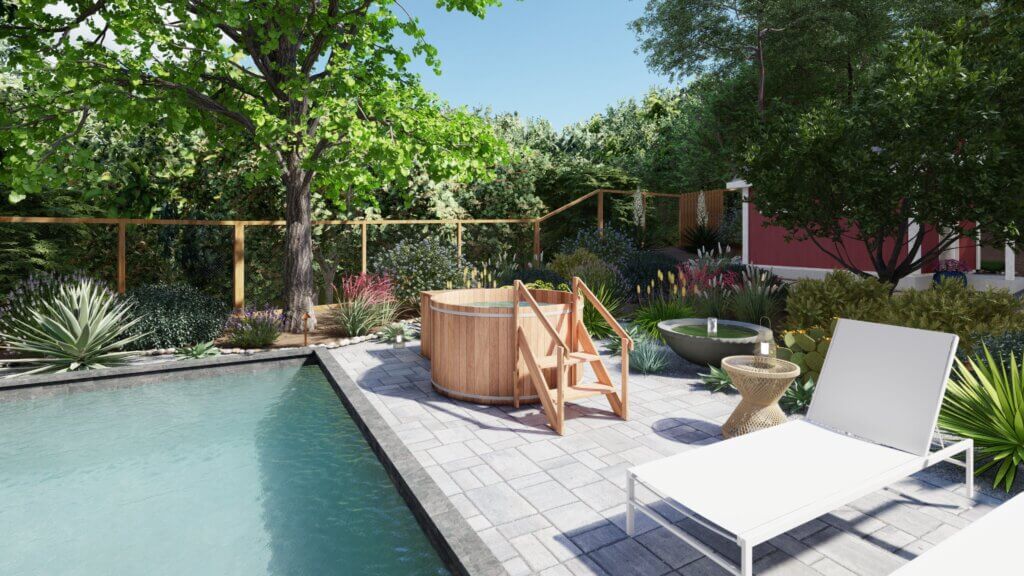
Our Dreamiest Plunge Pool Yard Designs
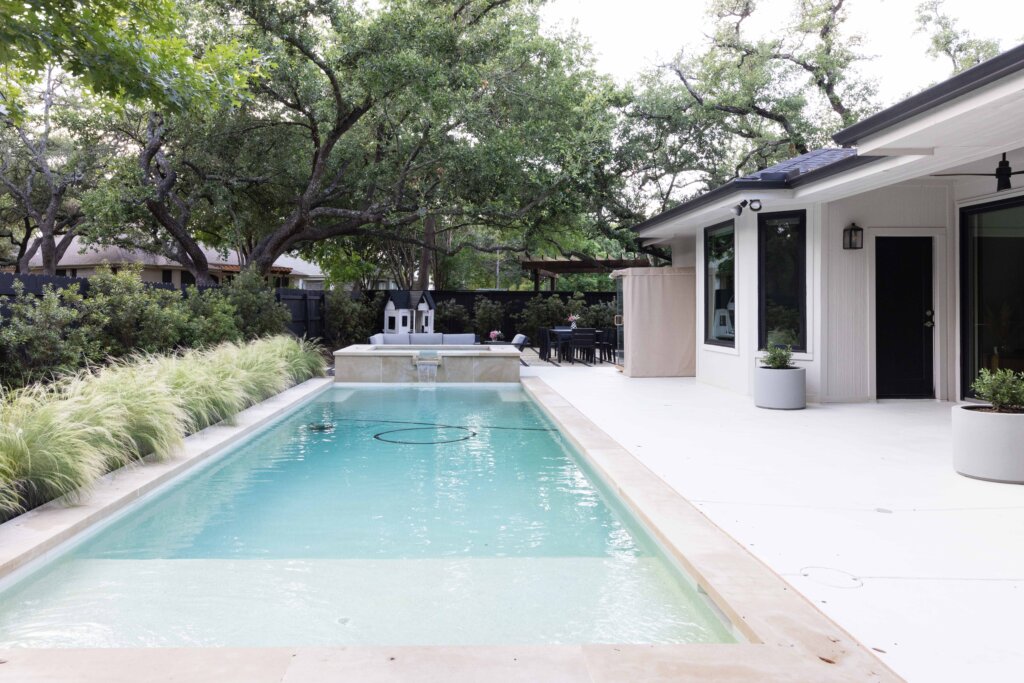
Our Favorite No-Grass Front Yard Ideas
